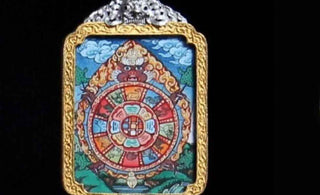
Thangka art, a sacred tradition in Tibetan culture, unfolds narratives on silk canvases, weaving a tapestry of spirituality, history, and philosophy. Each stroke of the artist's brush, laden with intention, becomes a thread in a visual story that transcends time and space. The narrative power of Thangka art lies not only in its aesthetic allure but in its ability to convey profound teachings, making it a living repository of Tibetan cultural and spiritual heritage.
At the heart of Thangka art is the narrative thread that binds the material world with the spiritual realm. These intricate paintings often depict Buddhas, Bodhisattvas, and deities, each figure carrying symbolic significance and embodying specific aspects of enlightenment. The process of creating Thangkas involves a meticulous adherence to traditional iconography, ensuring that each element in the composition contributes to the overall narrative. The narrative power of Thangka art extends beyond individual figures; it encompasses the entire visual landscape, with scenes often set against celestial realms or earthly landscapes that evoke the journey of enlightenment.
One remarkable example of the narrative power of Thangka art is the "Avalokiteshvara in the Thousand-Armed Manifestation" Thangka.
At first glance, the Thangka unfolds a visual feast. The background, adorned with celestial hues, transports the viewer to a divine realm where Avalokiteshvara's compassionate presence is manifested in a myriad of arms, each adorned with symbolic implements. The intricacy of the details, from the delicate brushstrokes depicting flowing robes to the nuanced expressions on the myriad faces, reflects the consummate skill of the artist.
The narrative begins with Avalokiteshvara, the embodiment of compassion, choosing to manifest in a thousand arms, each poised to alleviate suffering in the world. Each arm holds a unique implement—a lotus flower, a rosary, a vase—symbolizing the manifold ways in which compassion can be expressed. The arms radiate in a dynamic display, conveying the boundless reach of compassion to all corners of existence.
Amidst the thousand arms, the central face of Avalokiteshvara gazes with serenity and compassion. The eyes, said to number a thousand as well, symbolize the bodhisattva's watchful presence in the world, perceiving the myriad forms of suffering and responding with boundless empathy. The facial expressions of Avalokiteshvara reflect the nuances of emotion, from gentle compassion to resolute determination, creating a multifaceted narrative that transcends a static representation.
Symbolism abounds in the Thangka, with each element carrying layers of meaning. The lotus flowers, a recurring motif, symbolize purity and enlightenment amidst the muck of worldly existence. The rosary signifies Avalokiteshvara's dedication to the repetition of compassionate mantras, resonating like a cosmic melody. The vase holds the nectar of compassion, perpetually pouring forth to quench the thirst of suffering beings. The myriad arms and faces become a visual hymn to the diversity of compassionate responses embodied by Avalokiteshvara.
Beyond the visual splendor, the narrative power of this Thangka lies in its ability to evoke a spiritual experience. Viewers are not merely spectators; they are participants in the unfolding story of compassion. The Thangka becomes a portal, inviting individuals to contemplate the bodhisattva's teachings on compassion and the manifold ways it can be expressed in their own lives.
The craftsmanship of the "Avalokiteshvara in the Thousand-Armed Manifestation" Thangka reflects a deep understanding of both artistic technique and spiritual philosophy. The artist's meticulous attention to detail, from the precise rendering of facial expressions to the harmonious composition of the myriad arms, showcases a level of skill honed through years of dedication and practice within a rich artistic tradition.
This masterpiece not only showcases the artistic skill of the painter but also tells a vivid story of compassion and the Bodhisattva's vow to alleviate the suffering of all sentient beings. The thousand arms, each adorned with eyes, convey the omnipresence of compassion, reaching out to every corner of existence. The narrative unfolds in detail: the expressions of beings in various realms, the symbolism of the lotus, and the dynamic poses that depict the Bodhisattva's engagement with the world.
Thangka art serves as a visual scripture, especially in the context of Tibetan Buddhism, where oral and written traditions are supplemented by the power of images. The narratives depicted on silk become accessible teachings, particularly for those who may not be literate. The "Wheel of Life".
























